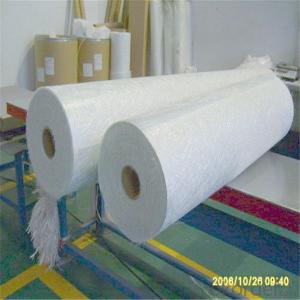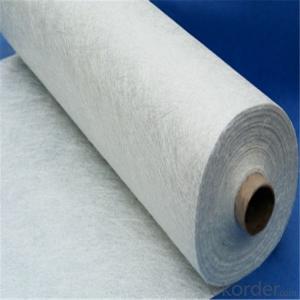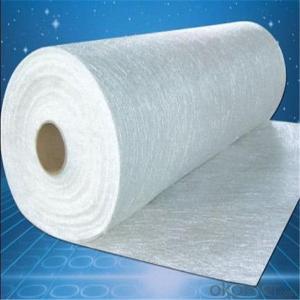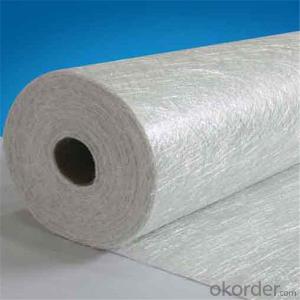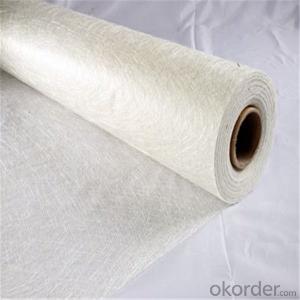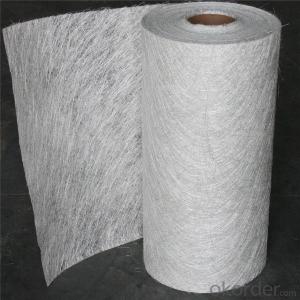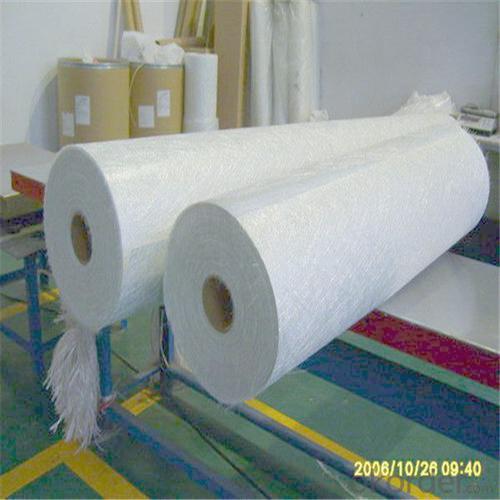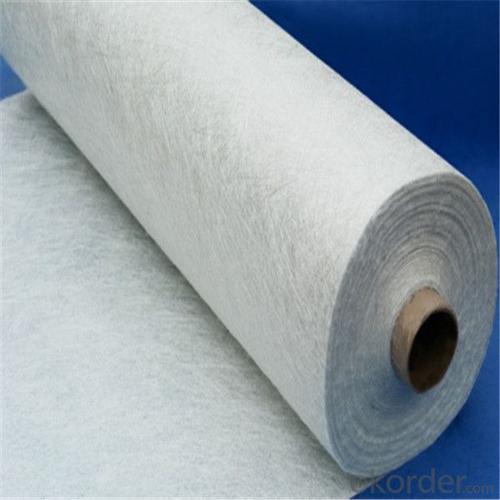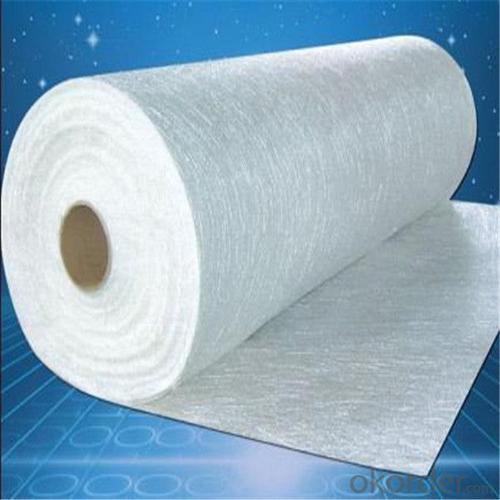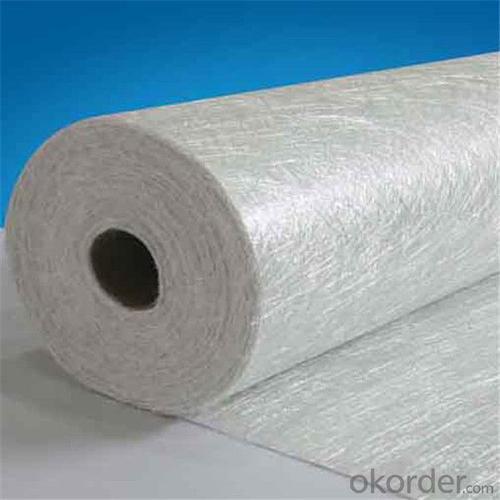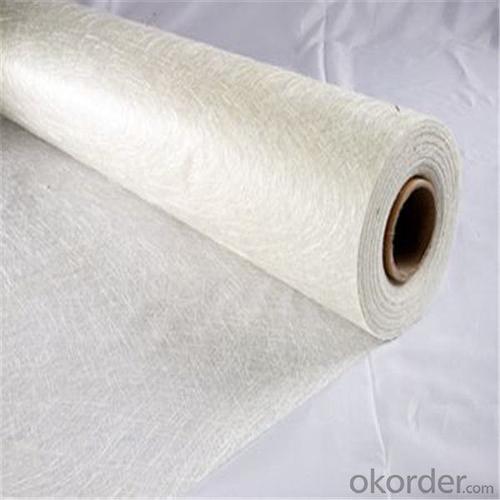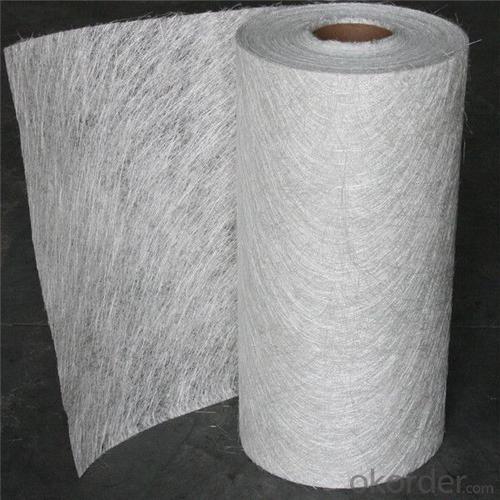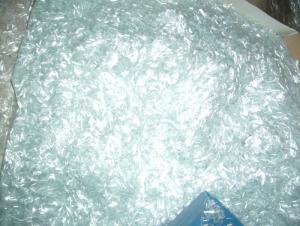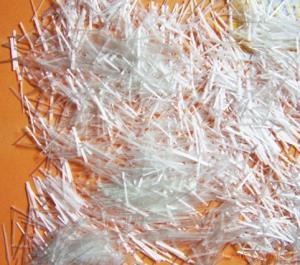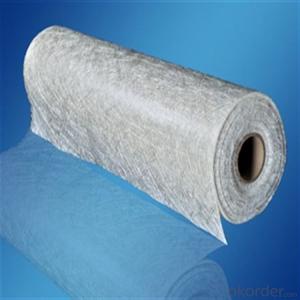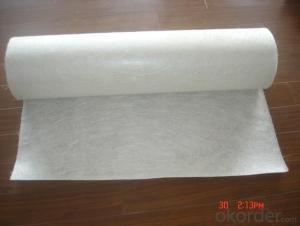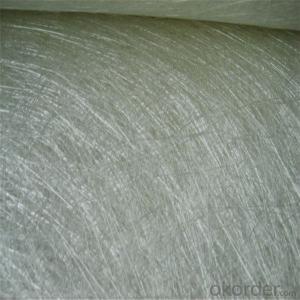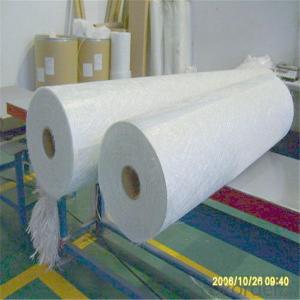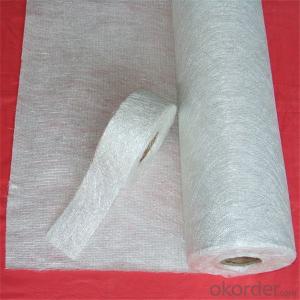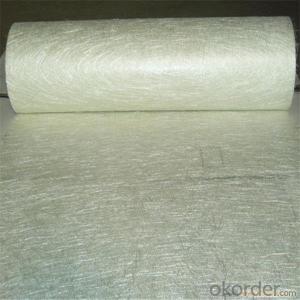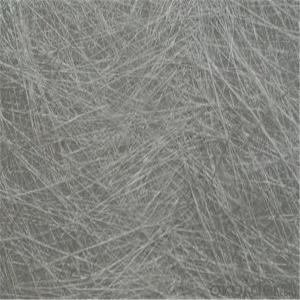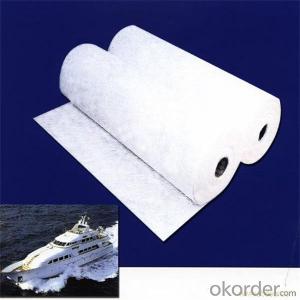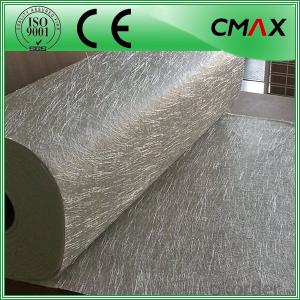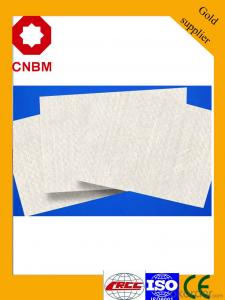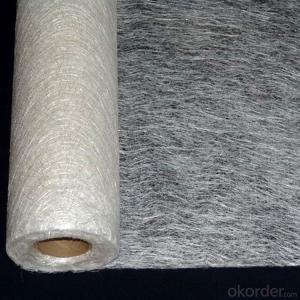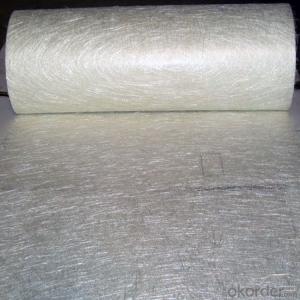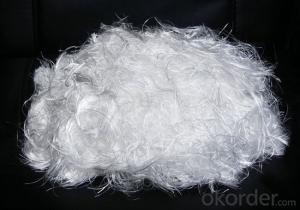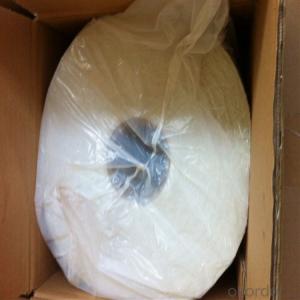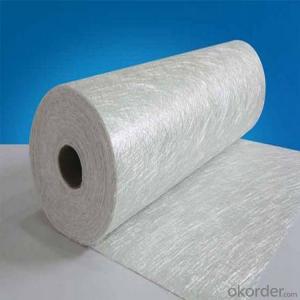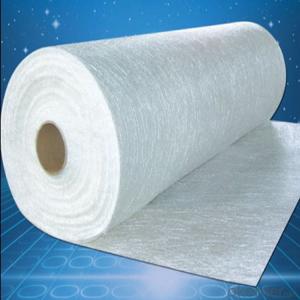Fiberglass Chopped Strand from Italy Supplier - Fiberglass Stand Mat Factory Fiberglass Panel
- Loading Port:
- Tianjin
- Payment Terms:
- TT OR LC
- Min Order Qty:
- 100 m.t.
- Supply Capability:
- 10000 m.t./month
OKorder Service Pledge
OKorder Financial Service
You Might Also Like
Quick Details
| Technique: | Chopped Strand Fiberglass Mat (CSM) | Dimensions: | 80g - 900g | Mat Type: | Continuous Filament Mat |
| Fiberglass Type: | E-Glass | Softness: | soft, very soft | Place of Origin: | Shandong, China (Mainland) |
| Brand Name: | cnbm | Model Number: | CSM | material: | fiberglass |
| Glass type: | E glass / C glass | Bond type: | powder or emulsion | Roll width: | 200 - 2600mm |
| Roll weight: | 28 - 55kgs | Density: | 225g/m2, 300g/m2, 450g/m2 | Certification: | ISO, CE |
Packaging & Delivery
| Packaging Details: | standand export packing . or packed as customer's need |
| Delivery Detail: | 10-20days after the contract is effective |
Specifications
Fiberglass Chopped Strand Mat
1.good combination fo resin
2.easy operation
3.good wet strength retention
Specification:
Fiberglass Chopped Strand Mat is an non-woven E- or C-glass fiberglass fabric manufactured by spreading continuous filament rovings of 50mm in length randomly and uniformly in combination with polyester binder in power form (or other binder in emulsion form). Powder or Emulsion fiberglass fiber chopped glass mat
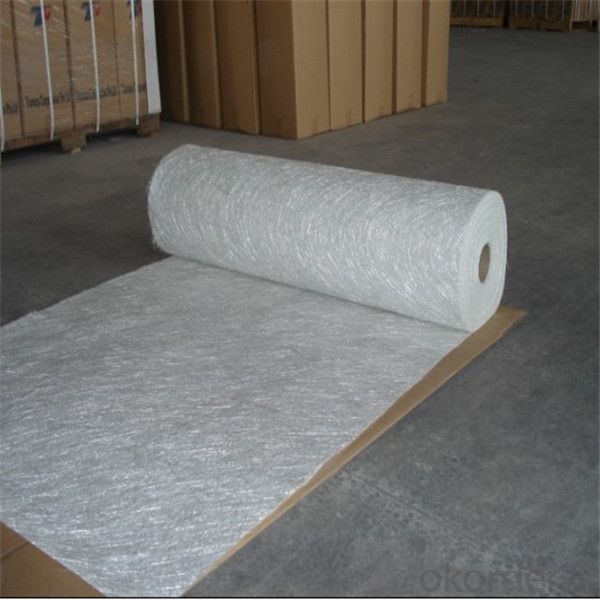
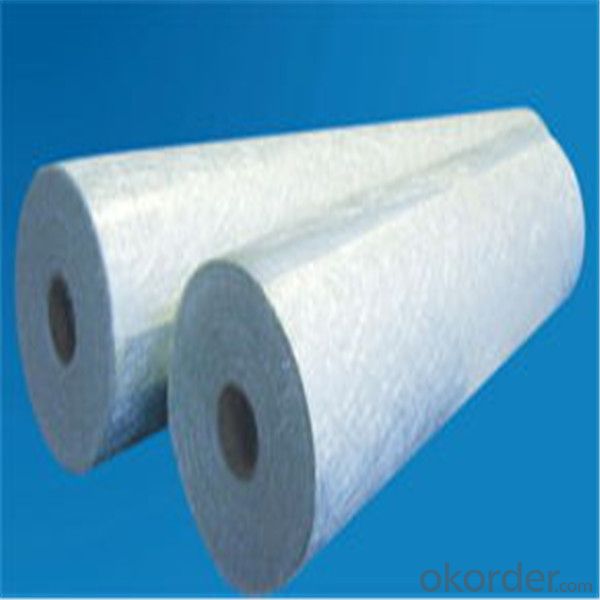
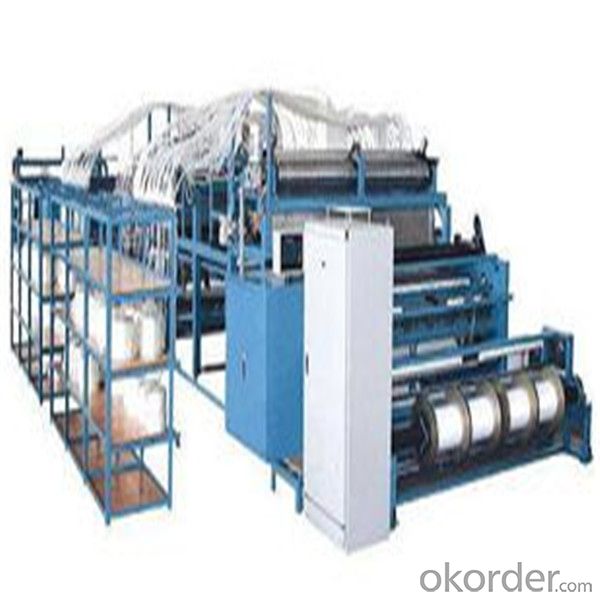
- Q: What is the dimensional stability of fiberglass chopped strand?
- The ability of fiberglass chopped strand to maintain its shape and size under different conditions is referred to as its dimensional stability. Fiberglass chopped strand is renowned for its exceptional dimensional stability, which means it can retain its shape and size even when exposed to extreme temperatures, moisture, or mechanical stress. This stability is a result of the inherent properties of fiberglass, such as its high strength-to-weight ratio and low coefficient of thermal expansion. Moreover, the random arrangement of the chopped strands enhances the stability by evenly distributing any potential stress or strain across the material. Overall, the dimensional stability of fiberglass chopped strand makes it a dependable and long-lasting material for various applications, including reinforcement in composites, insulation, and construction.
- Q: Can fiberglass chopped strand be used in the production of wind turbine hubs?
- Fiberglass chopped strand is indeed suitable for the production of wind turbine hubs. This type of glass fiber reinforcement is widely utilized across various sectors, including the manufacturing of wind turbine parts. It imparts strength, stiffness, and durability to the end product, making it a perfect material choice for wind turbine hubs. By combining the fiberglass chopped strand with resin and shaping it accordingly, a lightweight yet sturdy hub can be achieved, capable of withstanding the forces and stresses encountered during wind turbine operation. Moreover, fiberglass possesses corrosion resistance and outstanding fatigue resistance, rendering it highly suitable for long-term usage in wind turbine hubs.
- Q: How does the tensile strength of the chopped strand affect its performance?
- The tensile strength of a chopped strand directly affects its performance in various applications. Tensile strength is a measure of the maximum amount of tensile stress a material can withstand before breaking or fracturing. In the context of chopped strands, which are short, discrete fibers, the tensile strength determines their ability to resist pulling or stretching forces. A higher tensile strength in chopped strands generally leads to improved performance in several ways. Firstly, it enhances the overall strength and structural integrity of composite materials when these chopped strands are incorporated into them. Composite materials, such as fiberglass composites, rely on the reinforcement provided by chopped strands to improve their mechanical properties, including tensile strength. Higher tensile strength chopped strands allow for greater load-bearing capacity and resistance to deformation or failure. Secondly, a higher tensile strength in chopped strands enhances their ability to withstand external forces and extreme environmental conditions. This is particularly important in applications where the chopped strands are exposed to constant stress, such as in automotive parts, aerospace components, or infrastructure materials. The higher tensile strength allows for increased durability and longevity, reducing the likelihood of premature failure or damage. Moreover, the tensile strength of chopped strands also affects their processability and handling characteristics. Higher tensile strength chopped strands are less prone to breakage or fiber pull-out during handling, cutting, mixing, or molding processes. This improves the overall efficiency and quality of manufacturing operations, reducing waste and ensuring consistent performance in the final product. In summary, the tensile strength of chopped strands plays a crucial role in their performance. Higher tensile strength chopped strands offer improved strength, durability, and processability, making them more suitable for demanding applications where structural integrity and long-term performance are essential.
- Q: Is fiberglass chopped strand suitable for construction reinforcement applications?
- Construction reinforcement applications can benefit from the use of fiberglass chopped strand. This material is created by chopping fiberglass strands into smaller pieces, usually around 1 to 3 inches in length. These chopped strands are then mixed with a binder and molded into mats or sheets. The advantages of fiberglass chopped strand make it an excellent option for construction reinforcement. Firstly, fiberglass is known for its strength and durability, which enhances the overall strength of structures. It possesses high tensile strength and exceptional resistance to chemicals, corrosion, and weathering, allowing for its use in various construction applications. What's more, fiberglass chopped strand is lightweight, making it easier to handle and install compared to traditional reinforcement materials like steel. This can result in faster construction times and reduced labor costs. Moreover, fiberglass chopped strand is non-conductive and non-magnetic, making it ideal for situations where electrical conductivity or magnetic interference must be avoided. It is also non-combustible, providing an added level of safety in construction projects. In conclusion, fiberglass chopped strand is a versatile and dependable material for construction reinforcement. Its combination of strength, durability, lightweight nature, and non-conductive properties make it suitable for a wide range of construction projects.
- Q: How does the fiber alignment affect the properties of fiberglass chopped strand?
- The fiber alignment in fiberglass chopped strand plays a crucial role in determining the properties of the material. When the fibers are aligned in a parallel manner, it results in a higher strength and stiffness. This is because the aligned fibers can efficiently distribute and bear the applied load, enhancing the overall performance of the fiberglass. On the other hand, when the fibers have a random or non-aligned orientation, the properties of the fiberglass become more isotropic. This means that the material exhibits similar properties in all directions. While this may reduce the overall strength and stiffness compared to aligned fibers, it can provide advantages in certain applications where isotropic properties are desired, such as in molding complex shapes or in applications requiring impact resistance. Additionally, the fiber alignment also affects the dimensional stability of the fiberglass chopped strand. When the fibers are aligned, they act as reinforcement and help minimize shrinkage and expansion of the material. This aligns with the principle of anisotropy, where the material exhibits different properties in different directions. In contrast, non-aligned fibers may result in greater dimensional changes due to the lack of reinforcement and a less ordered structure. In summary, fiber alignment significantly impacts the properties of fiberglass chopped strand. Aligned fibers enhance strength, stiffness, and dimensional stability, while non-aligned fibers provide isotropic properties and advantages in specific applications. The choice of fiber alignment depends on the desired characteristics and requirements of the end product.
- Q: Can fiberglass chopped strand be used in pipe manufacturing?
- Indeed, the utilization of fiberglass chopped strand is feasible in the production of pipes. This particular material, fiberglass chopped strand, possesses a wide range of applications, one of which is pipe manufacturing. It boasts numerous benefits, such as its exceptional strength, resistance to corrosion, and lightweight characteristics. By combining the chopped strands with resin and employing various manufacturing techniques like filament winding or pultrusion, it becomes possible to shape the material into a pipe form. Consequently, the resulting fiberglass pipe exhibits outstanding mechanical properties, including remarkable tensile strength and stiffness, as well as resistance to both chemicals and extreme temperatures. Furthermore, fiberglass pipes are renowned for their durability and minimal maintenance requirements, making them a favored choice in industries such as oil and gas, chemical processing, and wastewater treatment.
- Q: What are the advantages of using fiberglass chopped strand in construction?
- There are several advantages of using fiberglass chopped strand in construction. Firstly, fiberglass chopped strand is known for its high strength-to-weight ratio. This means that it is strong and durable while being lightweight, making it an ideal material for construction applications. Its strength allows it to withstand heavy loads and stress, making it suitable for various structural components. Secondly, fiberglass chopped strand is highly corrosion-resistant. It does not rust or corrode like metals, making it a long-lasting material that can withstand harsh environmental conditions. This is particularly beneficial in construction where exposure to moisture, chemicals, and other corrosive elements is common. Additionally, fiberglass chopped strand is a versatile material that can be easily molded into various shapes and sizes. It can be used to create complex architectural designs and innovative structures. Its flexibility allows for custom fabrication, making it suitable for construction projects with unique requirements. Moreover, fiberglass chopped strand is an excellent insulator. It has low thermal conductivity, meaning it does not readily transfer heat. This makes it an effective material for insulation, keeping buildings cool in hot climates and reducing energy consumption for heating and cooling. Furthermore, fiberglass chopped strand is fire-resistant. It has a high melting point and does not catch fire easily. In the event of a fire, it can help contain the spread of flames and limit damage to the structure. Lastly, fiberglass chopped strand is cost-effective. While it may have a higher upfront cost compared to traditional materials, its durability, low maintenance requirements, and long lifespan make it a cost-efficient choice in the long run. It reduces the need for frequent repairs and replacements, saving both time and money. Overall, the advantages of using fiberglass chopped strand in construction include its high strength-to-weight ratio, corrosion resistance, versatility, insulation properties, fire resistance, and cost-effectiveness. These qualities make it an attractive option for various construction applications.
- Q: Can fiberglass chopped strand be used in the production of construction reinforcements?
- Yes, fiberglass chopped strand can be used in the production of construction reinforcements. Fiberglass chopped strand is a versatile material that is commonly used in the construction industry to reinforce various building materials such as concrete, plaster, and other composites. It is commonly mixed with these materials to enhance their strength, durability, and resistance to cracking and breaking. The chopped strands are typically added to the mixture during the manufacturing process, ensuring that the reinforcement is evenly distributed throughout the material. This makes fiberglass chopped strand an ideal choice for construction reinforcements, as it provides structural support and improves the overall performance of the building material.
- Q: How does the fiber pull-out resistance of fiberglass chopped strand affect the performance of composites?
- The fiber pull-out resistance of fiberglass chopped strand significantly affects the performance of composites. A higher fiber pull-out resistance ensures better mechanical properties, such as increased strength and stiffness, improved fatigue resistance, and enhanced load-bearing capabilities. This resistance prevents the fibers from slipping out of the matrix material, allowing them to effectively transfer stress and contribute to the overall structural integrity of the composite. Therefore, a higher fiber pull-out resistance positively impacts the durability and performance of composites in various applications.
- Q: Does fiberglass chopped strand improve the fatigue resistance of composite materials?
- Yes, fiberglass chopped strand can improve the fatigue resistance of composite materials. Fiberglass is known for its high strength and stiffness, and when added as chopped strands to a composite matrix, it reinforces the material and enhances its ability to withstand cyclic loading and fatigue. The random orientation of the chopped strands helps to distribute the stress throughout the composite, reducing the likelihood of crack initiation and propagation. The high tensile strength of fiberglass chopped strand also helps to resist the propagation of cracks, thereby increasing the fatigue life of the composite material. This reinforcement effect is especially important in applications where the composite material is subjected to repeated loading or vibrations, such as in the aerospace, automotive, and sporting goods industries. In addition, the unique properties of fiberglass, such as its resistance to moisture and chemicals, further contribute to the enhanced fatigue resistance of the composite material. By preventing moisture ingress and chemical attack, fiberglass chopped strand helps to preserve the structural integrity of the composite and prolong its fatigue life. It is worth noting that the specific design and composition of the composite material, including the type and amount of fiberglass chopped strand used, as well as the matrix material, can influence the extent of improvement in fatigue resistance. Therefore, careful consideration and testing should be conducted to optimize the composite formulation for the desired fatigue performance.
Send your message to us
Fiberglass Chopped Strand from Italy Supplier - Fiberglass Stand Mat Factory Fiberglass Panel
- Loading Port:
- Tianjin
- Payment Terms:
- TT OR LC
- Min Order Qty:
- 100 m.t.
- Supply Capability:
- 10000 m.t./month
OKorder Service Pledge
OKorder Financial Service
Similar products
Hot products
Hot Searches
Related keywords
